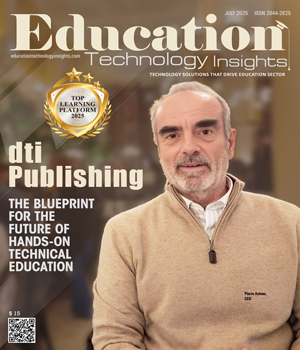THANK YOU FOR SUBSCRIBING
Be first to read the latest tech news, Industry Leader's Insights, and CIO interviews of medium and large enterprises exclusively from Education Technology Insights
Where EdTech is Headed in the Next Five Years
Atin Batra, General Partner, 27V
 Atin Batra, General Partner, 27V
Atin Batra, General Partner, 27VRegular readers of this magazine will inherently recognize the impact value of education technology. However, EdTech was a tough sector for investors to put money into over the last 10 years. Most likely they began investing out of a desire to build a better world, and were comfortable forgoing financial returns.
impact investment ———x—————— financial investment
This is because EdTech startups largely used to be B2B-focused, selling to schools, which was (and continues to be) extremely difficult. Long sales cycles, lots of red tape in the processes, disintermediation between the company and end customers, negligible exits – all of which made investing in the sector less appealing.
However, over the last 2-3 years, the market has developed tremendously. Selling directly to consumers (parents, students, even teachers) has become a viable business model. We’ve seen a number of healthy exits in the space. Population of EdTech unicorns doubled to 30(source). The puck has moved:
impact investment ——————x——— financial investment
So much so that funding for EdTech startups doubled to $16B+ in 2020, and is on track to an ATH this year (source). While 2020 was a tough time period in general for a lot of people around the world, for folks building and investing in education, it felt like boom time. It finally afforded them the freedom to build, and back, innovations that were previously considered too risky.
Trends to Keep an Eye on
The days of unidirectional, sage-on-a-stage, teaching are coming to an end. Students in today’s classrooms want higher engagement - with their teachers and peer students, with the content being taught, and with the real world outside the schools’ walls.
The reason for this movement is, unsurprisingly, the internet. Most children born in the last 15 years had access to the internet on their first day of school. The western world is fast approaching one device per child. Broadband access is only becoming more widespread with every passing day.
" The days of unidirectional, sage-on-a-stage, teaching are coming to an end."
In another recent article, I wrote about some of the most important trends to keep an eye on for the next 5 years. Sharing my top 3 here:
Community-Based Learning
Traditional schooling was left behind in early 2020. For some years now, community-based learning solutions (offline and online) have been emerging to provide students with a sense of belonging far beyond just their geographical reach. This trend, of course, acquired even greater importance in 2020 for home-ridden kids. Manifestations include in-person micro schools, fully online schools, discussion groups, and clubs for homeschoolers.
• Notable investments: Fiveable* (United States),Edgi Learning* (United States), Edlyft* (United States), Kalpha (Singapore)
Hybrid/Immersive Learning Tools
An everlasting legacy of 2020 will be a shift to, at the very least, hybrid learning - even fully remote learning in many cases. To support this distributed form factor, we’re already seeing an increased demand for tools such as better learning management systems, lesson planning platforms, and even products that enable immersive learning outside of the classroom.
• Notable investments: Pango Education* (United Kingdom), Fluent* (Canada), 101Edu* (United States), Class Technologies (United States)
Upskilling
The pandemic exposed multiple fault lines in the way our current workforce is being utilized (poorly) and trained (negligible) to handle the changing economy. Globally, companies are now racing to reskill/upskill their employees, and entrepreneurs are taking note. There has been an increased supply of applications and platforms that offer online learning for employment-focused skills.
Frankly, upskilling is one trend many are discovering only now. Most people think EdTech = classroom, school, university. But education is just as important for those folks already in the workforce. It’s their only opportunity to stay relevant, stay ahead of the rapid changes being wrought by technology to every single industry and job.
• Notable investments: Topknot* (United States), New Campus* (Singapore), AlpeAudio* (Israel), FrontRow (India) * indicates portfolio investments.
Read Also
Our AI Crisis isn't Technical. It's Human.
4 Keys to Managing Change
Active Engagement is the Foundation of Effective Leadership
Empowering Leadership through Innovation in Higher Education
The New Era of Education
Redefining Readiness: A Path Toward a Technology-Agnostic Future

I agree We use cookies on this website to enhance your user experience. By clicking any link on this page you are giving your consent for us to set cookies. More info






















